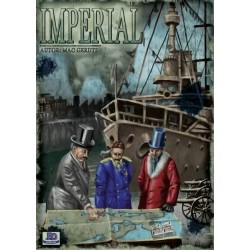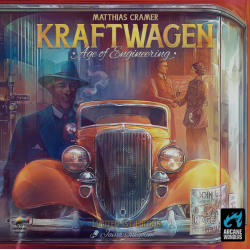No products in the cart.
Windmill Valley
It’s the late 19th century, and more than 9000 windmills dot the landscape of the Netherlands, some of them purpose-built to dry the lowlands, called polders. In the polders between these windmills are fields filled with colorful tulips—the flower that once was a part of the turbulent history of the first financial bubble but is now simply a quintessential part of the Dutch landscape, especially on the famous Bloemen Route (or “Flower Route”).
Terminus
You and your competitors’ transit companies have been hired by the city to build new subway lines and commercial developments to improve the city\'s bottom line.
Crossing Oceans
Towards the end of the 19th Century, ever larger and faster ocean liners revolutionized the growing maritime traffic. Daring shipping companies opened steamship lines to the most important ports worldwide. Modern steel juggernauts replaced traditional sailing ships and competed intensely for dominance on the major shipping routes.
Imperial
Each player represents an international investor. The players attempt to increase their capital and gaining influence in the most powerful European nations.
Kraftwagen: Age of Engineering
Despite the fact that the North American automobile industry developed later than in Europe, the innovations in the mass production of vehicles and the immense internal market made the American automobile industry the largest and most powerful in the world.
In Kraftwagen: Age of Engineering, you will push the development of new engines and bodies with which to launch the best possible range of vehicles on the market, and you will have the opportunity to demonstrate the power of your engines in the first Grand Prix that were held in American territory.
[DAMAGED] Windmill Valley
It’s the late 19th century, and more than 9000 windmills dot the landscape of the Netherlands, some of them purpose-built to dry the lowlands, called polders. In the polders between these windmills are fields filled with colourful tulips—the flower that once was a part of the turbulent history of the first financial bubble but is now simply a quintessential part of the Dutch landscape, especially on the famous Bloemen Route (or “Flower Route”).






![[DAMAGED] Windmill Valley](https://kienda.co.uk/6094-home_default/windmill-valley.jpg)





![[DAMAGED] Windmill Valley](https://kienda.co.uk/6094-medium_default/windmill-valley.jpg)